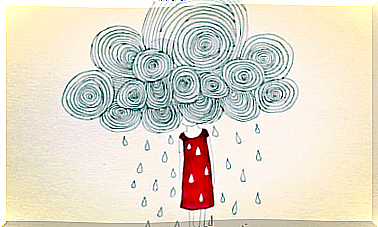The Formation Of Groups: Worchel Cyclical Model

The groups to which we belong are a key aspect since we integrate them, to a greater or lesser extent, as part of our identity. We all belong to various social groups (friends, family, work…). In this sense, a group is defined as a set of people who share a role, an activity, an objective or whatever aspect that unites them. Thus, an issue with which social psychology has been deeply concerned is the formation of groups.
The study of groups has been one of the fields that has aroused the most interest within and outside of psychology, especially due to the enormous potential that discoveries made in this field usually have. Knowing how their mechanisms of influence work – between groups, from group to individual and from individual to group – helps us to explain many of our behaviors to a large extent.
The formation of groups and their maintenance have been studied from many points of view. One of the most interesting and comprehensive models that explain this process is “Worchel’s cyclical model. ” This model poses an added value to the others, and is the contemplation of the stages of the groups as something cyclical, not linear.

Characteristics of the cyclical Worchel model
Worchel developed his group formation model based on a comprehensive review of the scientific literature. This model was defined by the following characteristics:
- It is a cyclical, non-linear model. This idea is based on the fact that many groups continue to exist after their original members have left.
- It is not limited only to the group, but it considers and defines the group in relation to other groups.
- It pays special attention to the conflict that members experience between their desire to belong to and identify with the group and their need for independence and distinctiveness as individuals.
- It considers the group as an entity outside the individual and that exerts real pressure on its members.
- The model consists of six different stages. Two of them correspond to their training, and the other four to development.
- Although not specified within the model, the stages occur in a predictable order that is repeated many times throughout the life of the group.
This set of features makes this model unique and worth studying. It shows us a description of the evolution of the groups quite complete and defined in some specific stages. In the next section we will see what those stadiums are.
Stages of group formation
The first of the stages, which could also be one of the last, since the process is circular, is a phase of discontent. When feeling that the group to which they belonged has stopped satisfying their needs, some members become passive or violent. These end up being expelled or voluntarily leaving the group.
That discontent, together with a triggering event, gives way to the second stage. This event presents a distinctive character and symbolically represents the problems related to the members of the group. This is when the original group is divided between those who remain loyal and those who depart from it.
The third stage then begins, the group identification phase, in which individuals who have left the previous group strive to develop a new identity as a separate group. In this phase of group development, a multitude of interpersonal processes take place, such as leadership, the perception of intergroup similarities or the delimitation of group boundaries.

Once identity is established, group members focus on meeting group goals. This is where the fourth stage begins , group productivity. The important thing now is to compare yourself with the other groups, in order to know the productivity of our group and improve it.
Now that individuals have been allowed to stop focusing on group identification, a process of individuation or fifth stage occurs. Which consists of a comparison of each individual with the rest of the individuals in their group. Comparisons are also made with the quality of other groups. This causes subgroups or people who leave the group to start to appear.
After this individuation, on many occasions we return to the phase of discontent. And these phases will be repeated in the same way in the new groups that are created, closing the cycle over and over again, with different groups in different fields.
With this cyclical model we can understand both the formation of new groups from others and the restructuring of an existing group. Something that gives us very valuable information when conducting new studies around the development of groups.









